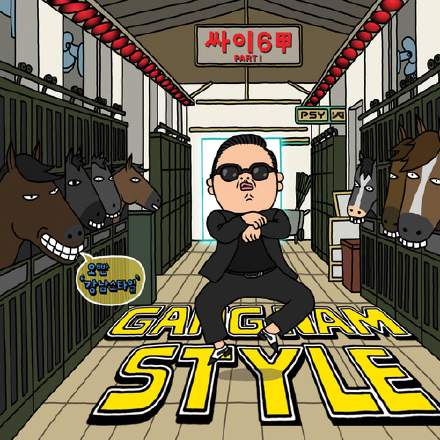
Peel away the daft dance moves, and ‘Gangnam Style’ is still an extremely effective mainstream house production that would make a good reference point for students of the genre. The kick has a solid 50Hz foundation and enough energy in the octave above to give a subjectively thick and ‘bassy’ timbre, but it nevertheless manages to exert a powerful influence over the arrangement even if you high-pass the mix at 1kHz, thanks to the transient’s HF extension and the deep kick-sync’ed gain-pumping effect — which is all good news if you’re concerned about widespread translation across different playback systems.
The sub-50Hz region is very tightly controlled, on the whole, which helps maximise the track’s loudness within the digital headroom, but it’s nice that there are also a few well-chosen moments where the subs are deliberately allowed to run wild for special effect. So, for example, the subterranean origins of the upwards synth sweeps at 0:52 and 2:14 really get your trouser-legs flapping, at a point in the arrangement where the technical trade-off (some loss of LF drum impact) isn’t a huge tragedy. Similarly, the sub-bass dives that follow the downbeats at 3:14 and 3:32 can afford to give the subwoofers a good old workout, because there’s little else but reverb competing for mix space simultaneously.
The way this mix folds down to mono is instructive as well. The main casualties are the wide synth pads and backbeat clap/snare sounds, which have been spread out to the extremes of the stereo image to keep them clear of the vocal. Crucially, though, the widening effects are most pronounced in the upper half of the spectrum, which conveniently leaves a bit of a spectral hole for all the most important vocal frequencies once you move into mono, compensating somewhat for the loss of the stereo image’s positional separation. The lower half of the frequency range remains narrower in stereo, though, so the balance of those synth/percussion parts relative to the central instruments doesn’t actually suffer as much as you might expect in mono, even though the tone changes. This kind of lateral thinking is what making the best compromise between mono and stereo presentations is all about.
Again, though, this mix doesn’t just tick the technical boxes as far as image width is concerned, because it also has some creative tricks up its sleeve. So the intro, for instance, gives you the beat and synth rhythm entirely in mono to start with, which means that the initial vocal entry really pops forward at you, by breaking out of the centre-field (as well as by christening the upper octaves of the frequency response). Check out the other end of the timeline, too: the final ‘boom’ sound-effect’s strong out-of-phase elements give a nice impressive ‘outside the speakers’ moment for anyone listening in stereo. As you’d expect, its level and tone really take a hit in mono, but with an incidental one-shot like that, it’s really not a problem.
I like the opening vocal sound too. It’s got lovely midrange ‘gristle’ to it – you can really hear the mechanics of his vocal apparatus, which brings him nice and close to you. Also, listen how the arrangement uses its off-beat hat pattern. You only get it for the first time 0:30-0:42, and there are nice drops at 1:37-1:52 and 2:59-3:15 which really help the details of the vocal and synth parts to come through. The one-bar phrase extensions at 1:04 and 2:26 are pretty effective too, in the way they emphasise the vocal hook.










